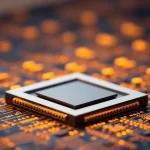Exynos 2600 vs Snapdragon 8 Elite Gen 5 Efficiency Comparison

The mobile technology landscape is ever-evolving, with each advancement bringing new capabilities and challenges. Recently, Samsung's Exynos 2600 chipset has garnered attention, particularly concerning its 5G modem integration. This article delves into the implications of the rumored separation of the modem from the chipset, comparing it to its competitors and exploring the potential impact on performance and efficiency.
As smartphones become increasingly sophisticated, their internal components must work harmoniously. The Exynos 2600, Samsung's first 2nm GAA (Gate-All-Around) chipset, is positioned to enhance performance significantly. However, the decision to utilize a separate 5G modem may undermine these advancements. Let’s explore the technical nuances, comparisons with other chipsets, and what this means for users and manufacturers alike.
- Implications of a Separate 5G Modem on Battery Life
- Comparative Analysis: Exynos 2600 vs. Snapdragon 8 Elite Gen 5
- Exynos 2600 vs. Dimensity 9500: A Battle of Efficiency
- Performance Benchmarks: AnTuTu and Geekbench Scores
- Core Configuration of the Exynos 2600: What to Expect
- Exynos 2600 vs. A19 Pro: The Future of Chipsets
Implications of a Separate 5G Modem on Battery Life
Recent discussions in tech circles reveal concerns about the efficiency of Samsung's Exynos 2600 due to the rumored lack of an embedded 5G modem. A user named ‘Beomkwi’ on the Korean forum Meeco highlighted this issue, noting that the Exynos 2600's modem could be a distinct unit rather than integrated into the chipset. This separation can lead to several drawbacks:
- Power Consumption: A separate modem draws additional power, potentially negating the efficiency gains promised by the 2nm GAA technology.
- Space Constraints: Incorporating a standalone modem can complicate the already congested internal layout of smartphones.
- Performance Impact: Increased power usage could lead to reduced performance, particularly under heavy data loads.
- Market Competitiveness: Competing chipsets, like those from Qualcomm and MediaTek, feature integrated modems, offering better efficiency and performance.
In contrast, companies like Qualcomm and MediaTek have recently announced integrated 5G solutions alongside their flagship chipsets, emphasizing the importance of having all components on a single die for optimization. Samsung's decision could lead to a competitive disadvantage if not addressed promptly.
Comparative Analysis: Exynos 2600 vs. Snapdragon 8 Elite Gen 5
The Snapdragon 8 Elite Gen 5 is a formidable competitor, featuring an integrated 5G modem that enhances both performance and efficiency. The differences between the two chipsets become apparent when evaluating:
- Performance: Snapdragon's integration allows for seamless communication between the CPU and modem, optimizing data transfer speeds.
- Power Efficiency: With combined components, Snapdragon can manage power more effectively, leading to extended battery life.
- Thermal Management: Less heat generation from a unified design can result in improved overall device performance.
While the Exynos 2600 aims for significant performance improvements over its predecessors, a separate 5G modem could hinder its ability to compete effectively against the Snapdragon 8 Elite Gen 5.
Exynos 2600 vs. Dimensity 9500: A Battle of Efficiency
Similarly, the Dimensity 9500 from MediaTek has made waves with its efficient design and performance metrics. The comparison reveals:
- Integration: Like the Snapdragon, the Dimensity 9500 features an embedded 5G modem, allowing for streamlined operations.
- AI Enhancements: MediaTek's chip employs AI to optimize performance based on usage patterns, a feature that may be less effective in the Exynos 2600 due to its separate modem setup.
- Cost-Effectiveness: Devices utilizing the Dimensity 9500 tend to be more affordable while offering comparable performance.
In conclusion, as the Exynos 2600 enters a competitive market, its separate modem could be a deciding factor for users considering their next purchase.
Performance Benchmarks: AnTuTu and Geekbench Scores
The performance of a chipset is often gauged through benchmarking tools such as AnTuTu and Geekbench. Although the Exynos 2600 is still new, early reports suggest:
- AnTuTu Score: Expected to fall within the high-performance range, aiming to challenge leading competitors.
- Geekbench Score: Anticipated to show significant improvements in multi-core and single-core performance, especially with optimized applications.
These benchmarks will provide crucial insights into the practicality of the Exynos 2600 in real-world scenarios, showcasing its capabilities against rivals.
Core Configuration of the Exynos 2600: What to Expect
The architectural design of the Exynos 2600 plays a vital role in determining its potential performance. With core configurations that possibly include:
- High-Performance Cores: Likely to be based on custom ARM designs for demanding tasks.
- Power-Efficient Cores: To handle lighter workloads without draining the battery.
- Integrated AI Processing: For enhanced computational capabilities and smarter resource management.
This combination aims to provide a balanced approach to performance and efficiency, although the effectiveness may vary with a separate 5G modem.
Exynos 2600 vs. A19 Pro: The Future of Chipsets
The A19 Pro is another contender in the market, and comparing it with the Exynos 2600 could shed light on future trends:
- Performance Metrics: Each chipset targets specific demographic needs; understanding their strengths can guide consumer choices.
- Integration: The trend toward integrated solutions is becoming increasingly important for consumer satisfaction.
- Value Proposition: As manufacturers look to provide cost-effective solutions, the balance of performance and price will play a crucial role.
As the competition heats up, it is essential for Samsung to reassess its strategy regarding the modem configuration of the Exynos 2600.
For those interested in a visual comparison, you can check this video that provides insights into the Exynos 2600’s performance against its rivals:
The Exynos 2600 appears to be a promising advancement for Samsung, yet the strategy behind its modem integration will play a crucial role in determining its success in the competitive smartphone market. As users anticipate its capabilities, the industry watches closely to see how Samsung addresses these emerging challenges and continues to innovate in an ever-demanding landscape.




Leave a Reply